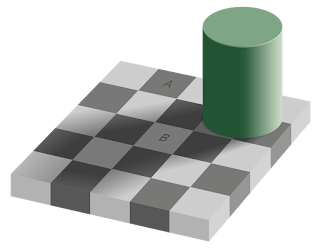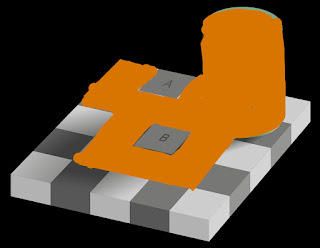First view this!
Actually the diagonal drawn here isn't a true diagonal.....It's slope must be 5/13 = 0.385.
Two hypotenuses (of two triangles) have different slopes; red one having 3/8 = 0.375 &
green one has 2/5 = 0.4.
So both together can't form true diagonal of this rectangle neither hypotenuse of colored triangle.
So we need to calculate area of each colored shape differently & then add to get area of colored region.
Area of colored region = 12 + 5 + 15 = 32..... Not 32.5
So if it was halved by perfect diagonal then 32.5 - 32 = 0.5 of area would have been painted more.
This is half of that white space.This is also reason why non painted part of top rectangle covers area 12 + 5 + 16 = 33 i.e. 0.5 than expected 32.5 because of imperfect diagonal.
And if we calculate area of other part (non painted) of bottom rectangle as 12 +5 +15 = 32 ; again less by 0.5 if there was perfect diagonal.
Since it is not a perfect diagonal that white space is 'missing' 0.5 of colored area & 0.5 of white space is 'taken' from other part of rectangle.
That's why 1 white space there!








